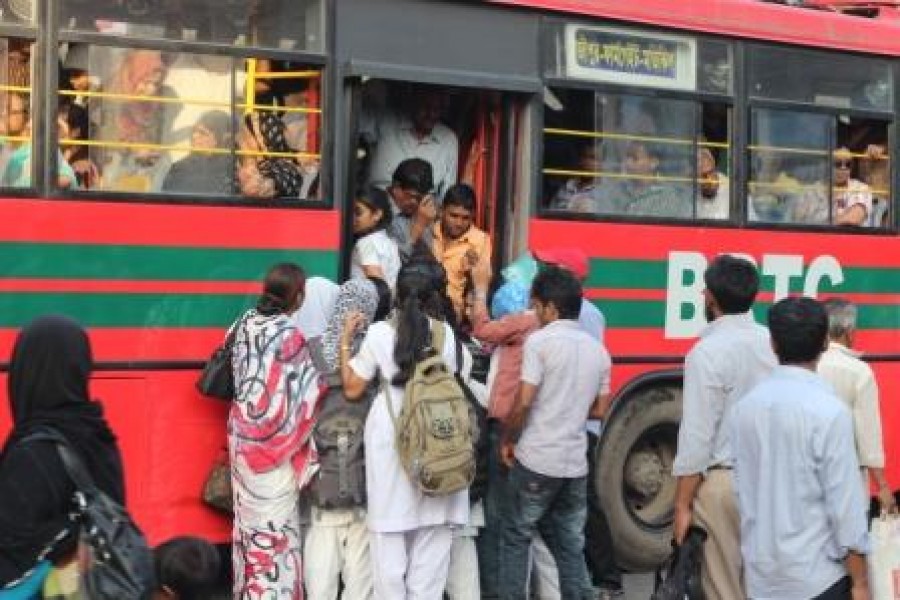It was one of those last working days of the week - a Thursday. And the city's Shahbagh sidewalks were filled to the brim with waiting passengers jostling for space. The clock was striking half past eleven as Nasima Akhter with a baby on her lap continued her agonising wait for a public transport.
Few oncoming buses that she approached were already jam-packed and teeming with passengers. Men were competing among themselves to get a berth, some managed risky ride while many returned unsuccessful. Nasima proved to be a weak competitor.
"I am waiting for a bus where I can avail a seat for more than 15 minutes and approached five buses but in vain as all were over-crowded," said a desperate Nasima, whose city is poorly equipped to cater public transport facilities to the growing need of women passengers.
Embarking on a crowded bus with a baby on her lap was challenging for Nasima in Dhaka, a city where some 40 to 50 new private cars hit the streets each day while fleets of rundown public buses are hardly replaced by newer ones.
Nasima's experience is commonplace in the sense commuters, especially the women, face such hassle in Dhaka every day.
Though buses are the cheapest mode of transport in a densely populated city like Dhaka, the sector has long been plagued with gross mismanagement, reports UNB.
There is a very scanty transportation facility for the women passengers in Dhaka despite the fact that the number of working women has gone up over the years. Neither the number of buses, nor the seats reserved for them in public transports have been increased proportionately.
Rather, when a few designated women-seats in buses are exhausted, the bus conductors tend to discourage other waiting female passengers from getting in.
But the one facility brings other disadvantages like when the specified seat is not available, the bus helpers do not let the women to get in.
So, it is a common scene in the rush hours that women have to wait longer to get transports, and often they are left with no other option but to hop in over-crowded and uncomfortable bus environment, at times exposing them to unwanted male advances.
A regular bus-passenger Saima Akhter believed keeping only nine seats reserved in buses are not enough as nowadays lots of women are working outdoors.
She asked for adequate number of buses for women, and buses with better interiors and environment.
Talking to UNB about the bus crisis and female passengers' daily struggle with the public transports, Chairman of Bangladesh Road Transport Corporation (BRTC), Farid Ahmed Bhuyain, acknowledged that only 15 women-special buses operated by his Corporation is too little to cater to the need of Dhaka.
He assured of allocating certain number of buses for ferrying women in city from among 600 buses that BRTC is going to procure from India in six-month time. He, however, couldn't say off hand how many more buses BRTC would allocate for women passengers in Dhaka.

- Wednesday, 27 November 2024 |
- Today's FE |
- e-Paper |
- Beta Website

